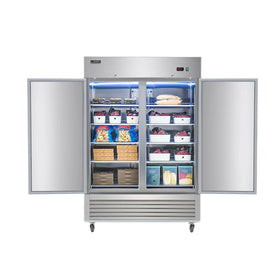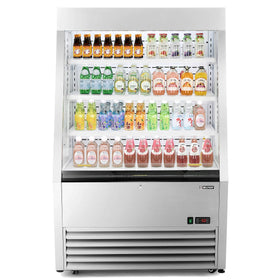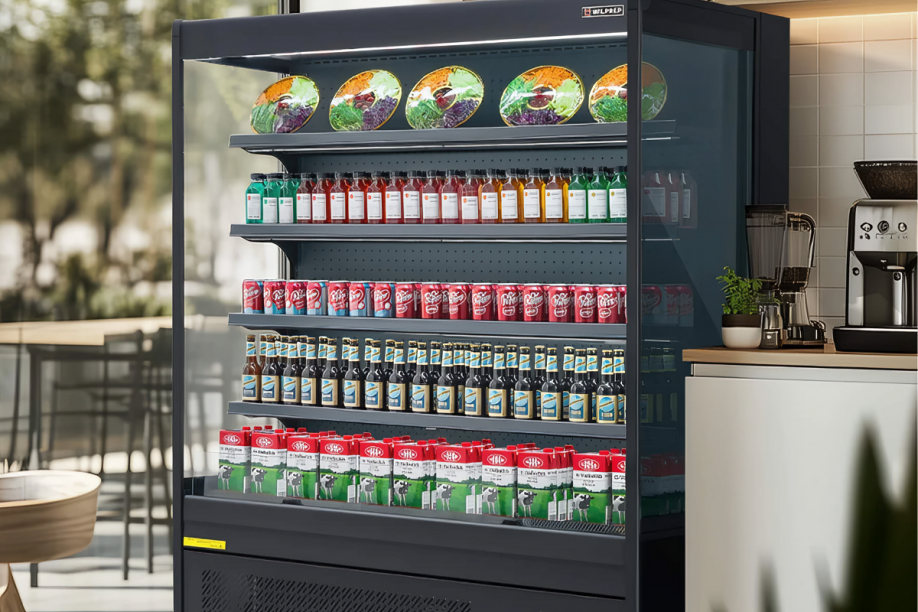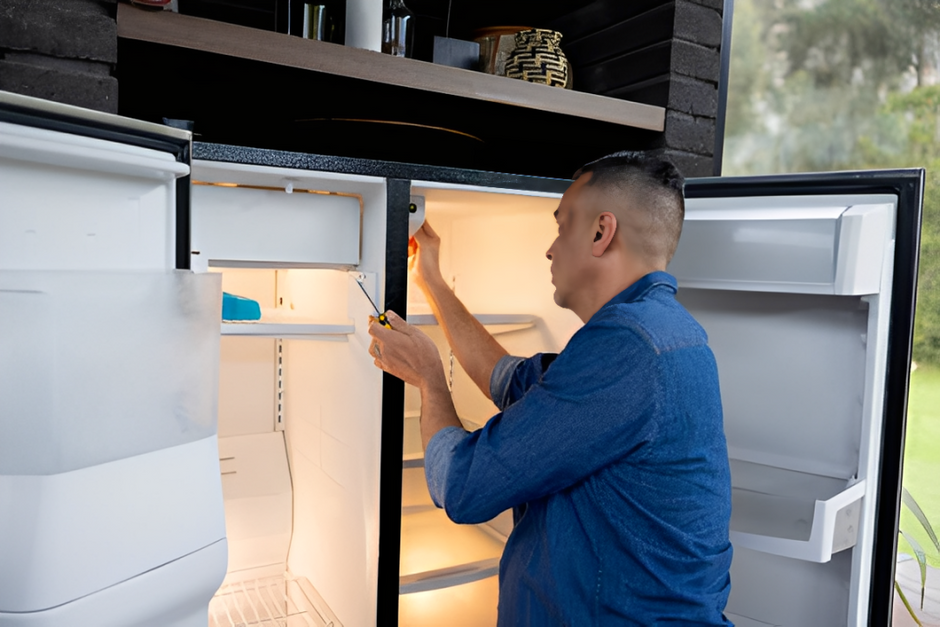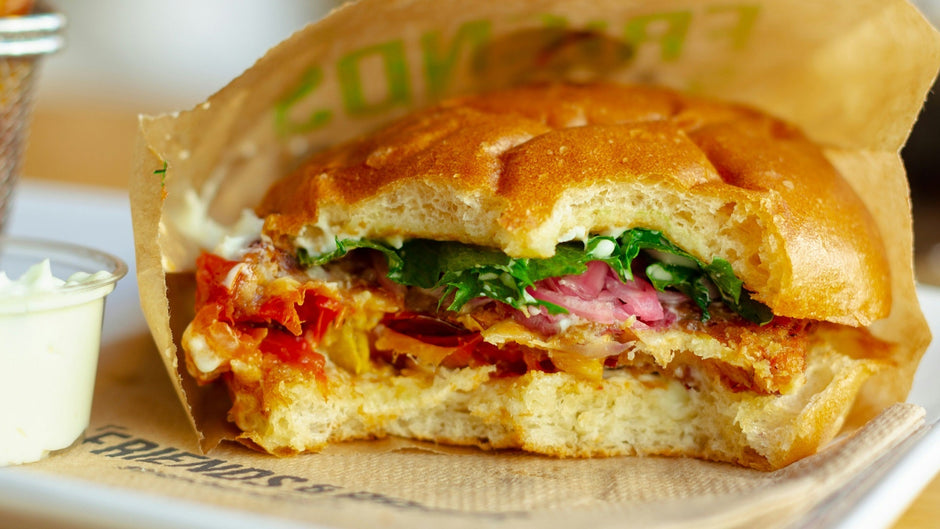A commercial kitchen and an industrial kitchen are similar in that they utilize similar kitchen equipment and typically much more volume than a home kitchen. However, a commercial kitchen is not the same as an industrial kitchen, and an industrial kitchen is not the same as a commercial kitchen.
Commercial kitchens and industrial kitchens differ fundamentally in terms of scale, purpose, production capacity, and compliance requirements. Understanding the differences between these two types of kitchens affects everything, from the kind of space you lease to the equipment you buy and the licenses you need.
We break down their differences in a clear, practical way with technical details, examples, and real-world applications.
Commercial Kitchens vs. Industrial Kitchens: Purpose and Function
The most fundamental difference between a commercial kitchen and an industrial kitchen is in the purpose of each.
Commercial kitchens are designed to prepare and serve food to customers, often in real time. The focus in a commercial kitchen is on flexibility, speed, and food presentation.
Commercial Kitchens Serve:
- Freshly cooked dishes
- Custom menu items
- Made-to-order meals or catered platters
- Directly served to customers or delivered within hours
An industrial kitchen, on the other hand, is designed for mass preparation, often for storage or marketing purposes. Unlike commercial kitchens, they do not prepare food to be eaten immediately; they produce and package food to be frozen, vacuum-sealed, or shipped for sales or distribution.
Industrial Kitchens Produce:
- Pre-packaged meals (frozen dinners, vacuum-sealed soups)
- Bulk food products (like sauces, dips, or processed meats)
- Institutional trays (e.g., for airlines or prisons)
- Meal kits or ingredient kits for delivery
So, while a commercial kitchen is designed for efficiency in serving a small number of known customers, an industrial kitchen is designed for mass production of food items to be sold to retailers or customers who are typically unknown.
One is local, while the other is national or international.
2. Size and Layout: A Matter of Scale
Kitchen size is another major difference between commercial and industrial kitchens. On average, an industrial kitchen is 2 to 20 times larger than a commercial kitchen, and sometimes even 50x the size of a typical restaurant kitchen. For example:
- A mid-sized commercial restaurant might operate with 1,200 sq ft of kitchen space.
- A central industrial kitchen used for frozen meal prep and packaging might be 40,000 sq ft or more.
| Type of Kitchen | Typical Size Range |
| Commercial Kitchen | 500 – 5,000 sq ft |
| Industrial Kitchen | 10,000 – 100,000+ sq ft |
Commercial Kitchen Layout
Commercial kitchens also differ from industrial kitchens in layout and design: commercial kitchens are built to be compact and efficient, while industrial kitchens are built like a factory.
The layout of a commercial kitchen is optimized for speed and multistation workflow. The design is made to optimize the speed and efficiency with which chefs can move between different equipment in order to cook faster.
Industrial Kitchen Layout
The layout of an industrial kitchen is optimized for production lines, and so they are usually more similar to warehouses in terms of design and layout.
The placement of equipment like work tables, conveyor belts, and bulk processing zones has to favor a smooth and seamless production system.
For example, a frozen dinner facility might span 40,000 sq ft, supporting 24/7 operations with automated processing lines and integrated logistics.

3. Volume of Production: How Much Food They Handle
Daily volume production differs significantly between a commercial kitchen and an industrial kitchen.
An industrial kitchen typically has 10 to 200 times more production capacity than a commercial kitchen, depending on the operation.
A big restaurant kitchen may be capable of cooking up to 300 meals on a busy day, but an industrial kitchen producing frozen meals can prepare and package 30,000 meals per shift. That's 100 times more.
Some very large-scale industrial kitchens can push well beyond 100,000 units per day, especially those supplying airline catering services, retail-ready-to-eat meals.
Industrial Kitchens are built for mass output and can produce 10,000 to 100,000+ units per day. They rely heavily on automation and may run multiple production shifts per day. In a day, an industrial kitchen may produce:
- 50,000 frozen entrees
- 20,000 bottled sauces
- 5,000 large-batch soups
Example:
- A commercial catering kitchen might prepare 500 boxed lunches for an event.
- An industrial kitchen might prepare, freeze, and ship 25,000 TV dinners per day.

4. Equipment: Similar Tools, Different Scale
Industrial kitchens and commercial kitchens use similar kitchen equipment; however, the commercial kitchen equipment units used in an industrial kitchen are often much bigger, more durable, better suited to automation, and subject to stricter cleaning guidelines.
Commercial Kitchen Equipment Used in Both, But Not the Same
| Equipment | Commercial Kitchen | Industrial Kitchen |
| Ovens | Convection, combi ovens | Rack ovens, tunnel ovens, continuous systems |
| Grills & Fryers | Countertop or freestanding | Oversized units, often built into production lines |
| Mixers | 10–20 qt planetary mixers | 60–200 qt floor mixers |
| Food Processors | Batch processors/blenders | Continuous-feed processors |
| Refrigeration | Walk-in coolers/freezers | Warehouse-scale cold storage |
| Dishwashers | Undercounter or pass-through | Conveyor belt or tunnel washers |
| Prep Tables | Stainless steel stations | Modular prep zones with conveyors |
| Kettles & Steamers | Small batch kettles | Steam-jacketed kettles up to 200 gallons |
| Portion Scales | Countertop digital scales | Floor scales and conveyor-linked weighing units |
For example, while a restaurant may have a 60-inch griddle to cook burgers, an industrial kitchen may have a 20-foot conveyor griddle that cooks patties continuously for flash-freezing.
Shopping For Affordable Kitchen Equipment
When it comes to items like commercial refrigerators, commercial freezers, commercial convection ovens, and many others, it is always advisable to buy new rather than used.
Moreover, it is possible to find affordable commercial kitchen equipment and acquire it for a price that does not break the bank.
- Choose an affordable brand. Some brands pride themselves on being affordable and providing support for business owners just starting out.
- Buy in bulk. Save up, plan diligently, and make all your purchases at once. That way, you can benefit from combos that bring down the price when you buy a variety of items.
- Wait for a Sale. Some commercial kitchen brands offer generous sales programs at different times of year, sometimes up to 30% off.
Wilpreps Commercial Refrigerators On Sale Now!
Wilprep is offering a variety of high-quality brand brand-new kitchen refrigeration equipment that you can get without breaking the bank.
Here are some commercial refrigeration equipment items on sale from Wilprep right now:
Commercial Reach-in Refrigerators and Freezers (up to 25% off)
Wilpreps reach-in commercial refrigerators and freezers come in different sizes, with formidable Embraco compressors and copper evaporators to maintain a stable and effective temperature of 32-50℉. They are large, spacious, and come with safety and quality certification from ETL, ETL Sanitation, and DOE.
The Commercial Freezers come with Cubigel compressors and copper evaporators to ensure fast and stable freezing between -11 to 14°F. You also get adjustable shelves and LED lights for visibility.
Wilprep display refrigerators( Up to 28% off)
With models ranging from 22 -74 cubic feet, Wilprep Commercial Display Refrigerators provide ample space, adjustable shelves for attractive display, and customizable lightboxes to give your products a little pop.
Each of these display refrigerators has been tested by Intertek and meets the applicable requirements of Energy Star and CEC. They also come with certification from ETL, ETL Sanitation, and DOE.
More Refrigerators on Sale
You can also find the following refrigeration equipment on sale up to 15%
- Open-air Merchandisers
- Prep Tables
- Commercial Chef Bases, etch
7. Regulatory Requirements: Local vs Federal Oversight
Compliance is essential in any kitchen, but industrial kitchens face more rigorous and layered oversight. Commercial Kitchens Must
- Obtain local food permits and health inspections
- Follow food safety standards (e.g., ServSafe-certified staff)
- Meet fire safety, plumbing, and sanitation codes
Industrial Kitchens Must:
- Meet FDA or USDA regulatory standards
- Operate under HACCP plans (Hazard Analysis and Critical Control Points)
- Follow GMP (Good Manufacturing Practices)
- Adhere to labeling, traceability, and packaging rules
- Be compliant with OSHA workplace safety regulations
- Manage environmental impact (waste disposal, water use)
For instance, while a café might need a grease trap and regular inspections, an industrial food facility needs ingredient traceability systems, batch records, and contamination control protocols for every item produced.

Final Thoughts: Which Kitchen Do You Need?
Choosing between a commercial and industrial kitchen depends entirely on your business goals.
- If you're feeding customers daily or prepping meals for events, you need a commercial kitchen.
- If you're looking to mass-produce, package, or scale nationally, you’re ready for an industrial kitchen.
Each model has its advantages, but they’re fundamentally different ecosystems.
Quick Summary:
| Feature | Commercial Kitchen | Industrial Kitchen |
| Primary Use | Preparing meals for immediate service | Producing, packaging, and shipping food |
| Size | 500–5,000 sq ft | 10,000–100,000+ sq ft |
| Daily Output | 50–500 meals/day | 10,000–100,000 units/day |
| Equipment | Mid-capacity, versatile tools | High-capacity, automated machinery |
| Food Type | Fresh, à la carte | Frozen, canned, vacuum-sealed |
| Regulations | Local food codes | Federal (FDA, USDA), HACCP, GMP |
If you're planning your next kitchen, expanding a business, or building a new facility, knowing these distinctions will help you avoid costly mistakes and choose the right equipment, space, and compliance framework from day one.
Here are 5 affordable Commercial Freezers in 2025.


